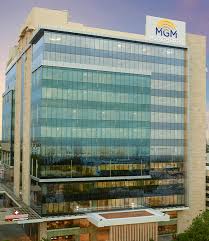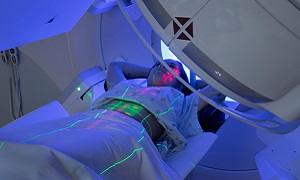Best Doctors in India for Osteosarcoma Treatment
Best Hospitals in India for Osteosarcoma Treatment
CK Birla Hospital, Gurugram
- City: Gurugram, India
Hospital Highlights:
- The CK Birla Hospital in Gurugram is a NABH-accredited multi-specialty hospital.
- The hospital strives to increase the quality of healthcare by focusing on UK NHS nurse and midwife training requirements. Policies and practices derived from the National Institute for Health and Treatment Excellence (NICE) recommendations in the United Kingdom ensuring that a strong focus on safety, high-quality clinical care, and sanitation is maintained.
- The hospital’s cutting-edge technology and facilities allow for real-time communication and seamless collaboration among caregivers, ensuring accuracy and the best possible results. Those with foreign experience and accreditations make up part of the hospital’s team of clinicians.
KIMS Hospital, Hyderabad
- City: Hyderabad, India
Hospital Highlights:
- KIMS Hospital (a brand name of Krishna Institute of Medical Sciences) is one of the largest and best multi-speciality hospitals in Hyderabad. The hospital provides various treatments to an enormous number of patients.
- The hospital has a capacity of more than 3000 beds. KIMS Hospitals offers different healthcare services in more than 25 specialities and super specialities.
- The hospital is equipped with modern medical equipment and technology. It has robotic equipment to provide minimal invasive techniques for patients.
- The hospital is aimed at providing world-class healthcare facilities and services at an affordable cost for patients.
- The various specialities and departments of the hospital include neurosciences, gastroenterology & hepatology, robotic science, reproductive sciences, dental science, oncological sciences, organ transplantation, heart and lung transplantation and mother and child care.
Fortis Hospital, Shalimar Bagh
- City: New Delhi, India
Hospital Highlights:
- Fortis Hospital in Shalimar Bagh is a multi-super specialty hospital that strives to provide world-class patient care by leaving no stone unturned.
- Fortis, Shalimar Bagh, with 262 beds and a 7.34-acre footprint, provides the best level of medical care through its team of doctors, nurses, technicians, and management professionals.
Reliance Hospital, Mumbai
- City: Mumbai, India
Hospital Highlights:
- Reliance Hospital is one of the best super-specialty care hospitals in Navi Mumbai.
- The main purpose of this hospital is to become a trustworthy place for the best health and hope for society. The hospital is well connected to the suburbs of Mumbai and Navi Mumbai.
- The hospital has various specialty departments, viz., Accident & Emergency, Anesthesiology, Dental Services, Dermatology, Diabetology, Dietetics Nutrition, Endocrinology, ENT, Gastroenterology, General Surgery, Gynaecology And Obstetrics, Hepato Pancreato Biliary Surgery, Infectious Disease, Internal Medicine, Interventional Radiology, Laboratory Medicine, Minimal Access Laparoscopic Surgery, Nephrology, Neurosciences, Opthalmology, Orthopaedics, Paediatrics, Pain Management Palliative Care, Physical Medicine Rehabilitation, Plastic And Reconstructive Surgery, Psychiatry, Pulmonary Medicine, Radiology, Rheumatology, Transplant, Urology Andrology, Vascular Surgery
Lilavati Hospital & Research Centre, Mumbai
- City: Mumbai, India
Hospital Highlights:
- Lilavati Hospital & Research Centre is India’s premier multi-speciality tertiary care hospital and has been recognised as a global medical excellence centre.
- Lilavati Hospital & Research Centre has built an unrivalled level of trust with its patients over the years, thanks to a solid foundation that comprises cutting-edge facilities, the best medical competence, research, education, and charity endeavours.
- The hospital is quite proud of the fact that it now serves patients from all kinds of backgrounds, not just from the United States but from all around the world.
- The hospital has a total of 323 beds, one of the largest Intensive Care Units (ICUs), 12 Operation Theatres with modern amenities, over 300 consultants, and almost 1,800 personnel.
MGM Healthcare, Chennai
- City: Chennai, India
Hospital Highlights:
- Located in Chennai, India, MGM Healthcare is a top multispecialty hospital that provides all medical services under one roof.
- Since its founding in 2019, MGM Healthcare has quickly become a leading national referral centre, creating several innovative flagship initiatives.
- MGM Healthcare combines next-generation medical and digital technologies to provide better patient results.
- With 12 centres of excellence, more than 400 inpatient beds, 100 intensive care unit beds, and 24/7 emergency care, MGM Healthcare leaves no chance in redefining the patient experience in Chennai.
- MGM Healthcare boasts 250+ expert doctors across 30+ departments, including Cardiology, Pulmonology, Neurology, Obstetrics & Gynaecology, and more.
- They house 12 specialized Centres of Excellence, including Neurosciences, Orthopaedics, and Multi-Organ Transplantation.
- Their team of doctors, nurses, and paramedics works together to give every patient individualized treatment.
Osteosarcoma
Osteosarcoma, which is also termed as osteogenic sarcoma, is a type of bone cancer. It occurs when the cells that grow new bone form a cancerous tumor. If the disease is diagnosed early, then treatment procedures such as surgery or chemotherapy are successfully able to remove the tumor, before it can spread.
However, after the treatment is complete, lifelong monitoring is important to avoid any late side effects.
Anyone can have osteosarcoma, but it is generally the most common kind of bone cancer prevalent among children and teenagers. It occurs mostly among teenage boys.
Symptoms
Some of the signs and symptoms of the condition can include any of the following:
- Swelling or lumps around the bones or the ends of bones
- Pain at night
- Pain after exercise
- Bone or joint pain or soreness. This pain may come and go for months.
- Broken bones without a clear reason
- Limping
Although some limb pain and swelling are common among active and growing children, it is best to talk to your doctor if these signs do not go away in a couple of weeks, or if they worsen.
Causes & risk factors
What exactly causes osteosarcoma is not known. Doctors know this cancer forms when something goes wrong in one of the cells, that are responsible for making the new bone.
The condition generally begins when a healthy bone cell develops significant changes in its DNA. A cell’s DNA contains all the instructions telling it what to do. These changes tell the cell to start making new bone when it is not required. This results in a mass or a tumor of poorly formed bone cells that might invade and cause damage to healthy body tissue.
Some of these factors are known to increase the risk of osteosarcoma:
- Having undergone treatment previously with radiation therapy
- Other bone disorders, such as fibrous dysplasia or pagel’s disease
- Certain inherited or genetic conditions
Diagnosis
A medical history and a physical exam
Imaging Tests
Biopsy
Treatment
Treatment is going to depend on several factors, including the tumor’s location, how fast it’s growing, and whether it has spread. Your age and overall health is also considered.
Treatment is the most effective when you start it before the cancer has spread beyond your bones to any other tissues or organs. People are generally able to find tumors early since they cause pain, swelling or a limp. It is best to let your doctor know about warning signs like these so that you can start treatment early.
Most people who are having osteosarcoma require surgery along with chemotherapy. Some also choose to get radiation therapy.
Surgery
Limb-sparing surgery
Amputation
Rotationplasty
Chemotherapy
This treatment method involves using strong drugs to kill the cancer cells as well as to stop their further growth. They are usually administered into your vein through an IV.
Doctors treat most osteosarcomas with chemotherapy. The drugs help to shrink the tumor, which can help to make surgery easier, if it is required later. They are also able to get rid of small clusters of cancer cells that doctors might not see during medical scans.
Side effects generally include nausea and vomiting, diarrhea, along with a loss of appetite. Children generally have less severe side effects from this treatment as compared to adults, so they might receive higher doses of medication.
Radiation therapy
In this method, high-energy X-rays are used to kill cancer cells.
Radiation doesn’t work as effectively on osteosarcoma cells as compared to other cancers.
However, your doctor might choose to use a procedure known as external beam radiation therapy if they are unable to remove all of the cancer through other methods.
Complications
Complications of osteosarcoma as well as its treatments can lead to the following side effects:
- Cancer that spreads- Osteosarcoma can spread from where the area where it started to other areas of the body, which makes treatment and recovery even more difficult. Osteosarcoma that spreads is mostly known to spread to the lungs and other bones.
- Adapting to limb amputation- Surgery that removes the tumor and spares the limb is used whenever it is possible. However, it might be necessary to remove part of the affected limb to remove the cancer. In such cases, an artificial limb or prosthesis will be required but it requires time, practice and patience.
- Long-term treatment side effects- The aggressive chemotherapy which is required to control osteosarcoma can lead to substantial side effects, in the short term as well as in the long term. Your health care team can help you manage the side effects that occur during the treatment and provide you with a list of side effects to watch for in the years following your treatment.











